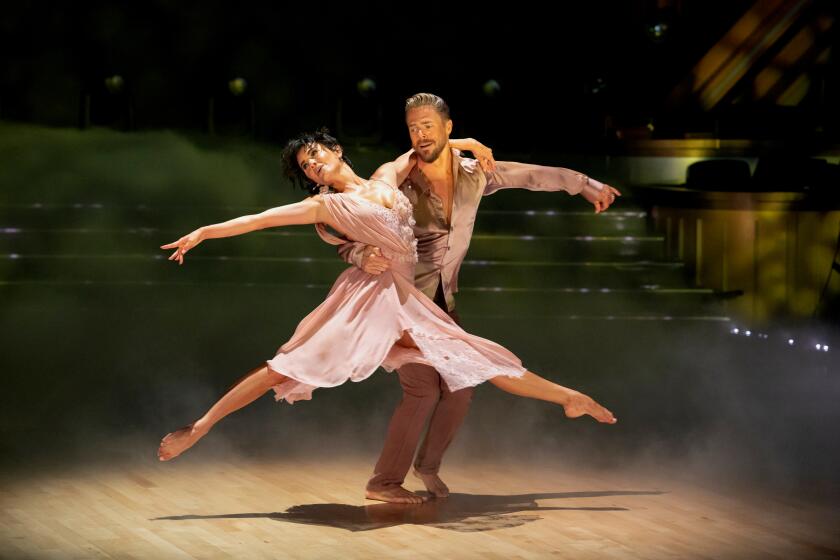MUSIC REVIEW : GROVES, PHILHARMONIC REVIVE BARBER WORK
Sir Charles Groves returned to conduct the Los Angeles Philharmonic in the Dorothy Chandler Pavilion Thursday night, bearing gifts that proved to be of varying degrees of welcome.
The gift that won the most unqualified welcome was of domestic origin--Samuel Barber’s too-neglected Violin Concerto of 1939, as played by the Philharmonic concertmaster Sidney Weiss.
The standard weakness of violin concertos resides in their final movements; even the best of them fail to maintain the starting pace. But Barber managed to reverse the process; his last movement, a driving moto perpetuo, fully realizes the traditional function of a concerto as a showpiece. It seethes and stomps with unrelenting speed and accumulated fury, and it ends in a satisfying climax.
Weiss brought it off with a fine show of abandon that might have seemed reckless had not every note been properly in place and roundly shaped as to tone quality.
His suave tone and dependable technique also illuminated the first two movements, though the solo violin would be more gratefully employed had the composer devised real melodies of unmistakable import, rather than carefully crafted themes. The audience cheered and the orchestral accompaniment ably supported the soloist.
By way of the local novelty, Sir Charles imported Sir Michael Tippett’s Concerto for Double String Orchestra, an early work dating from 1939. At that date Sir Michael’s muse had not yet evolved into the thick, knotty texture and complicated structures of his late music as revealed here in a recent concert celebrating the composer’s 80th birthday.
The Double Concerto goes on for too long, but on the whole it is a clear and cheerful piece, mixing elements of jazz and folk music, and not overburdened by its rhythmic complications. The conductor dedicated the slow movement to the memory of Eugene Ormandy, who died earlier this week.
At the moment of performance the general air of repression seemed to be part of the composer’s intention, but after hearing Sir Charles’ version of Brahms’ Second Symphony one is more inclined to fault the conductor.
The Groves view of Brahms is untraditional, not to say odd. It is leisurely, reticent, alternately tenuous and explosive.
It has little traffic with subtlety or refinement. It subdues ideas ordinarily stressed, bombards with unindicated accents and exaggerates all dynamic levels. It fiddles with unimportant detail and ignores the long line.
As a result, a confused orchestra played raggedly, noisily, roughly and unmusically. It was a sorry night for Brahms and for the Philharmonic.
More to Read
The biggest entertainment stories
Get our big stories about Hollywood, film, television, music, arts, culture and more right in your inbox as soon as they publish.
You may occasionally receive promotional content from the Los Angeles Times.










